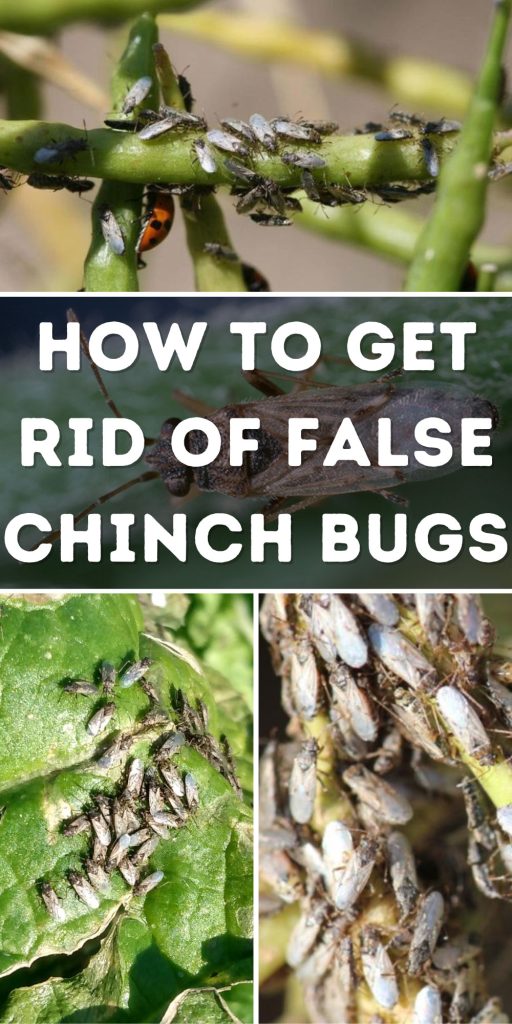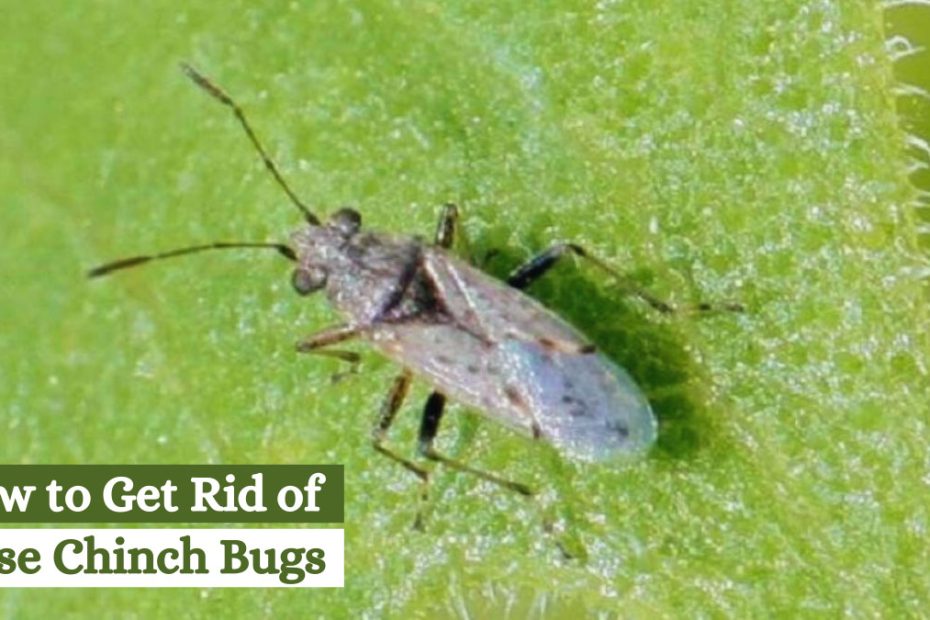False chinch bugs can wreak havoc on your garden, turning lush greenery into a wilting mess. These tiny pests thrive in hot, dry conditions and often target plants like sunflowers, mustard, and various grains. If you’ve noticed your plants looking stressed or discolored, you might be dealing with an infestation.
Don’t let their small size fool you. False chinch bugs can cause significant damage if left unchecked. Luckily, there are effective strategies to get rid of these pests and protect your garden. In this guide, you’ll learn practical, eco-friendly methods to eliminate false chinch bugs and keep your plants healthy.
Key Takeaways
- Identify False Chinch Bugs: Recognize these pests by their grayish-brown color, small size (1/8 to 1/6 inch), and oval shape with long antennae and wing pads.
- Understand Their Behavior: False chinch bugs thrive in hot, dry conditions, feeding on the sap of plants, particularly in the mustard family and various grains.
- Prevention Methods: Maintain your lawn (mowing, watering, aeration, weeding), use insect-resistant plants like marigolds and zinnias, and consider companion or native planting.
- Natural Remedies: Employ beneficial insects (ladybugs, lacewings) and homemade solutions (soap spray, garlic spray, neem oil) for eco-friendly pest control.
- Chemical Treatments: Use appropriate pesticides (insecticidal soaps, pyrethroids, neonicotinoids) responsibly, following safety guidelines to protect beneficial insects and the environment.
- Monitoring and Maintenance: Regularly inspect your garden, employ sticky traps, and implement long-term strategies such as proper lawn care, removing weeds, and practicing crop rotation for effective pest management.

Understanding False Chinch Bugs
Identifying and managing false chinch bugs effectively involves understanding their characteristics, behavior, and the signs of infestation in your garden.
What Are False Chinch Bugs?
False chinch bugs (Nysius raphanus) are small pests that primarily feed on plants in the mustard family and various grains. These insects are often mistaken for other pests due to their small size and similar appearance.
Key Characteristics:
- Size: 1/8 to 1/6 of an inch long
- Color: Grayish-brown
- Appearance: Oval-shaped with long antennae and wing pads
Life Cycle and Behavior
Understanding the life cycle and behavior of false chinch bugs helps in identifying infestations and implementing control measures.
Life Cycle Stages:
- Egg: Laid in clusters on host plants
- Nymph: Wingless, immature stage; resembles adults but smaller
- Adult: Fully developed with wings, capable of flying
Behavioral Traits:
- Feeding Habits: Sap-feeding; targets leaves and stems
- Movement: Aggregates in large numbers; migratory during hot, dry weather
Common Signs of Infestation
Recognizing the signs of a false chinch bug infestation can help prevent significant damage to your garden.
- Discolored Leaves: Yellowing or browning, especially in young plants
- Stunted Growth: Reduced overall growth due to sap extraction
- Plant Stress: Wilting, even with adequate water
Knowing what to look for and acting quickly can minimize the impact of these pests. Regular monitoring and early detection are key in maintaining the health of your garden.
Prevention Methods
To protect your garden from false chinch bugs, preventive measures are crucial. Implementing the following methods can help keep your plants healthy and pest-free.
Proper Lawn Maintenance
Maintaining your lawn properly prevents false chinch bug infestations. Regular upkeep deprives these pests of their preferred habitats.
- Mowing: Keep your lawn mowed regularly to reduce tall grass where chinch bugs hide. Aim for a height of 2.5 to 3 inches for optimal health and pest deterrence.
- Watering: Water your lawn deeply but infrequently to strengthen grass roots. Avoid overwatering, which creates favorable conditions for bugs.
- Aeration: Aerate your soil once or twice a year to improve water and nutrient penetration. This promotes robust root systems less susceptible to pest damage.
- Weeding: Remove weeds promptly, as they can harbor chinch bugs and other pests. Focus on eradication of mustard family plants that chinch bugs favor.
Use of Insect-Resistant Plants
Introducing insect-resistant plants can naturally deter false chinch bugs. Select varieties that are less appealing to these pests to create a less hospitable environment.
- Resistant Varieties: Opt for plant species known for their resistance to chinch bugs. Examples include marigolds, zinnias, and certain ornamental grasses.
- Companion Planting: Integrate plants that repel chinch bugs into your garden. Garlic, chrysanthemums, and mint are effective choices.
- Native Plants: Incorporate native species that have adapted to local pests. These plants often require less maintenance and are more resilient.
Implementing these preventive measures can significantly reduce the risk of false chinch bug infestations. Maintain your lawn properly and use insect-resistant plants to keep your garden healthy and thriving.
Natural Remedies
Getting rid of false chinch bugs can be eco-friendly and effective. Explore these natural remedies to protect your garden from these pests.
Beneficial Insects
Introducing beneficial insects helps control false chinch bugs by naturally reducing their population. These insects are natural predators of false chinch bugs:
- Ladybugs: Known for their bright colors, ladybugs (Coccinellidae) feed on a variety of small pests, including chinch bugs.
- Lacewings: Lacewing larvae (Chrysopidae) are voracious predators and can significantly reduce pest numbers.
- Predatory Mites: These small arthropods, such as Amblyseius swirskii, attack chinch bug eggs and nymphs.
Consider purchasing beneficial insects from reputable suppliers and releasing them into your garden. This method provides long-term control without chemical use.
Homemade Solutions
Homemade solutions offer practical and accessible ways to combat false chinch bugs:
- Soap Spray: Mix 1 tablespoon of mild liquid soap with 1 quart of water. Spray directly on the bugs and affected plants. This solution disrupts the pests’ cell membranes, killing them on contact.
- Garlic Spray: Blend 2 garlic bulbs with 2 cups of water. Strain and dilute with an additional 1 gallon of water. Spray on infested plants to repel false chinch bugs.
- Neem Oil: Combine 2 tablespoons of neem oil with 1 gallon of water. Apply this mixture to plants to interfere with the pests’ feeding and reproduction.
Use these solutions regularly for optimal results. These methods minimize the risk of harm to beneficial insects and maintain garden health.
Chemical Treatments
Chemical treatments can serve as an effective method for controlling false chinch bugs. Before choosing and applying any chemicals, it’s essential to understand the options available and how to use them safely.
Choosing the Right Pesticide
Selecting an appropriate pesticide involves careful consideration. False chinch bugs, like other pests, respond to specific compounds. Here are some key terms and compounds commonly used:
- Insecticidal Soaps: Potassium salts that disrupt the pest’s cell membranes. Example: Safer® Brand Insect Killing Soap.
- Pyrethroids: Synthetic chemicals acting on the nervous system of insects. Example: Permethrin.
- Neonicotinoids: Compounds causing paralysis and death in insects. Example: Imidacloprid.
When choosing a pesticide, consider:
- Effectiveness: Ensure the product targets false chinch bugs specifically.
- Safety: Opt for products that pose minimal risk to beneficial insects and humans.
- Environmental Impact: Select eco-friendly options when possible to reduce harm to the environment.
Safe Application Practices
Applying pesticides correctly minimizes risks to you, your family, and the environment. To practice safe application, follow these guidelines:
- Read Labels: Always read and follow the instructions on the pesticide label.
- Protective Gear: Wear gloves, long sleeves, and eye protection to prevent exposure.
- Targeted Application: Apply the pesticide only to affected areas to avoid unnecessary spread.
- Timing: Apply chemicals during early morning or late evening to minimize harm to beneficial insects.
- Storage: Store pesticides in a cool, dry place, away from children and pets.
- Disposal: Dispose of empty containers and excess pesticide according to local regulations.
Using these chemical treatments effectively and safely helps control false chinch bugs, protecting your garden’s health.
Monitoring and Maintenance
Regular monitoring and maintenance keep your garden free of false chinch bugs. Early detection helps mitigate potential damage, ensuring healthier plants.
Regular Inspections
Inspect your garden regularly to catch signs of infestation early. False chinch bugs often hide in debris and dense vegetation.
Key Inspection Steps:
- Check Under Leaves: Examine the undersides of leaves for small grayish-brown bugs, especially on mustard plants and grains.
- Look for Damage Signs: Observe plants for discolored leaves, stunted growth, or signs of stress, which may indicate pest presence.
- Use Sticky Traps: Place yellow sticky traps around your garden to attract and trap false chinch bugs, making it easier to spot infestations.
- Inspect Often: Monitor your garden every week, especially during hot, dry periods when false chinch bugs are most active.
Long-Term Prevention Strategies
Long-term strategies are essential to reduce the risk of false chinch bug infestations.
- Maintain Lawn Properly:
- Mow Regularly: Keep grass trimmed to eliminate hiding places for bugs.
- Water Deeply: Water infrequently but deeply to promote strong root systems.
- Aerate Soil: Aerate soil annually to improve water infiltration and root growth.
- Remove Weeds: Weed regularly to reduce habitats for pests.
- Plant Resistant Varieties: Incorporate insect-resistant plants like marigolds, zinnias, and native species which deter false chinch bugs.
- Use Mulch: Apply organic mulch to garden beds to retain moisture and shade the soil, making it less hospitable for pests.
- Practice Crop Rotation: Rotate crops each season to disrupt the life cycle of false chinch bugs.
Follow these monitoring and maintenance practices to safeguard your garden against false chinch bugs and sustain vibrant plant health.
Conclusion
Effectively managing false chinch bugs requires a combination of preventive measures, natural remedies, and, if necessary, chemical treatments. By maintaining your garden properly, introducing beneficial insects, and using eco-friendly solutions, you can keep these pests at bay. Regular monitoring and early detection are crucial for minimizing damage and ensuring your plants thrive. With these strategies, you’ll create a healthier, more resilient garden that’s less susceptible to false chinch bug infestations.
Frequently Asked Questions
What are false chinch bugs?
False chinch bugs are small pests, measuring 1/8 to 1/6 of an inch long, and grayish-brown in color. They primarily feed on plants in the mustard family, sunflowers, and grains.
How can I identify a false chinch bug infestation in my garden?
Look for signs such as discolored leaves, stunted growth, and overall plant stress. Regular monitoring and early detection are crucial for minimizing damage.
What plants are most at risk from false chinch bugs?
Plants in the mustard family, sunflowers, and various grains are particularly susceptible to false chinch bug infestations.
What preventive measures can I take to protect my garden from false chinch bugs?
Maintain proper lawn care with regular mowing, deep but infrequent watering, soil aeration, and prompt weeding. Use insect-resistant plants like marigolds, zinnias, and native species.
Are there natural ways to control false chinch bugs?
Introduce beneficial insects like ladybugs, lacewings, and predatory mites. Homemade solutions such as soap spray, garlic spray, and neem oil can also be effective.
What chemical treatments can I use for false chinch bugs?
Use pesticides containing insecticidal soaps, pyrethroids, or neonicotinoids. Follow safe application practices like reading labels, wearing protective gear, and targeted application.
How often should I monitor my garden for false chinch bugs?
Conduct regular inspections, ideally once a week, checking under leaves for pests and signs of damage. Use yellow sticky traps for early detection.
Can companion planting help deter false chinch bugs?
Yes, companion planting with garlic, chrysanthemums, and mint can create a less hospitable environment for false chinch bugs and help protect your garden.
What are the long-term strategies for preventing false chinch bug infestations?
Implement proper lawn maintenance, plant resistant varieties, use mulch, and practice crop rotation to disrupt the pests’ life cycle and keep your garden healthy.
